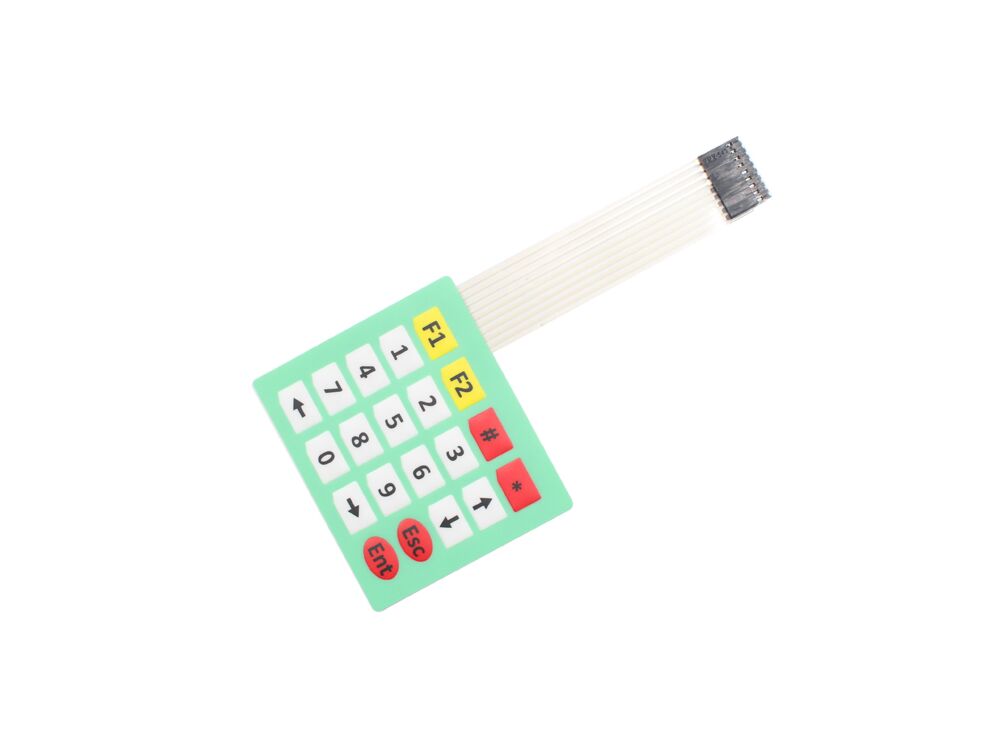How Membrane Switches Are Shaping the Future of Electronic Interfaces
How Membrane Switches Are Shaping the Future of Electronic Interfaces
Blog Article
Comprehending Membrane Changes: The Key to Trustworthy and durable Controls

What Are Membrane Switches?
Membrane layer switches are a sophisticated option in the world of user interface innovation, integrating capability and layout seamlessly. These gadgets function as an interface between individuals and digital systems, incorporating numerous components into a compact format. Usually built from adaptable, slim layers of materials, membrane switches are designed to react to touch, enabling users to interact with machinery and electronic devices effectively.
The primary elements of a membrane layer button consist of a published circuit layer, visuals overlay, and a spacer layer that stops unplanned activation. The visuals overlay can be tailored to mirror brand name identification or customer choices, boosting appearances while guaranteeing functionality. Membrane buttons are generally made use of in numerous applications, including medical gadgets, consumer electronic devices, and industrial devices, owing to their resilience and resistance to ecological aspects such as wetness and dust.
Among the crucial advantages of membrane buttons is their ability to withstand damage, making them optimal for high-traffic settings. Furthermore, they are light-weight and require marginal space, enabling innovative layouts in item development. Generally, membrane switches stand for a effective and practical option for contemporary digital interfaces, marrying modern technology with user-centric style principles.
Just How Membrane Switches Job
The operation of membrane layer switches joints on a basic yet efficient mechanism that converts user input into electronic signals. These buttons contain numerous layers, typically consisting of a visuals overlay, a spacer layer, and a circuit layer. When a customer presses the button, the top layer deforms, allowing a conductive aspect in the circuit layer to reach an equivalent conductive pad on the underside of the graphic overlay. This call shuts the circuit and sends out an electronic signal to the tool, indicating that the button has been triggered.
The layout of membrane layer buttons can differ, yet they typically integrate domes or tactile elements to give comments to the user, boosting the general experience - membrane switch. The materials used in membrane layer buttons, such as polyester or polycarbonate, contribute to their durability and resistance to ecological aspects, including dampness and dirt. Moreover, the published circuits are commonly enveloped, which protects them from deterioration in time.
Advantages of Membrane Layer Buttons

In addition, recommended you read membrane layer buttons are known for their resilience. Created from durable products, they are immune to dirt, dampness, and physical wear, which dramatically prolongs their life-span compared to standard mechanical switches. This durability makes them especially ideal for high-traffic atmospheres and applications calling for longevity.
One more considerable benefit is the ease of cleansing and maintenance. The smooth surface of membrane layer switches lessens dust buildup and is typically invulnerable to spills, making them optimal for settings that require regular sanitization.
Moreover, membrane layer buttons provide a structured account, bring about a thinner layout that can be incorporated right into various devices without adding mass. This attribute not only enhances the aesthetic appeal yet likewise contributes to an extra ergonomic product design.
Applications of Membrane Layer Switches
Functional and straightforward, membrane buttons discover applications throughout a wide variety of industries, consisting of clinical tools, consumer electronic devices, and industrial equipment. In the clinical field, these buttons are indispensable to tools such as analysis tools, patient tracking systems, and infusion pumps, where integrity and convenience of cleansing are important. Their capacity to endure rough atmospheres and preserve performance makes them excellent for such applications.

In customer electronic devices, membrane switches are utilized in products like microwaves, washing makers, and remotes - membrane switch. Their sleek style enables instinctive user interfaces, enhancing the total individual experience while giving longevity and resistance to use and tear
Commercial devices also takes advantage of membrane switches, particularly in control panels for equipment and automation systems. These switches use security versus dirt and pop over to this web-site dampness, guaranteeing regular performance in challenging atmospheres. Additionally, their customizable features allow suppliers to tailor them to particular functional demands, boosting performance and functionality.
Selecting the Right Membrane Switch
When picking a membrane button, it is necessary to think about numerous variables that influence performance and viability for certain applications. The main factors to consider include environmental conditions, tactile feedback, sturdiness, and style specifications.
First, assess the operating setting; switches subjected to dampness, chemicals, or extreme temperatures need details products to make sure durability and functionality. Next off, review the requirement for responsive feedback. Depending on individual communication, some applications might gain from a tactile reaction to browse around this web-site validate activation, while others may prefer a non-tactile design for visual factors.
Sturdiness is one more essential element; membrane layer buttons need to be developed to stand up to frequent usage, effects, and abrasion. Make certain the picked button can sustain the expected lifecycle, specifically in high-usage scenarios.

Final Thought
In verdict, membrane changes offer as necessary components in the style of reliable and long lasting control systems across various industries. The convenience of membrane changes enables for tailored services that satisfy details functional requirements, strengthening their relevance in contemporary technology.
Membrane layer changes represent an important element of modern-day user interface style, blending performance with durability in different applications.Membrane switches are a sophisticated service in the realm of customer interface modern technology, incorporating capability and style perfectly. Typically constructed from adaptable, slim layers of materials, membrane switches are developed to react to touch, allowing users to engage with machinery and digital tools successfully.
The style of membrane layer buttons can differ, yet they often integrate domes or responsive aspects to offer responses to the customer, enhancing the total experience.In final thought, membrane changes offer as important components in the design of reliable and long lasting control systems across different markets.
Report this page